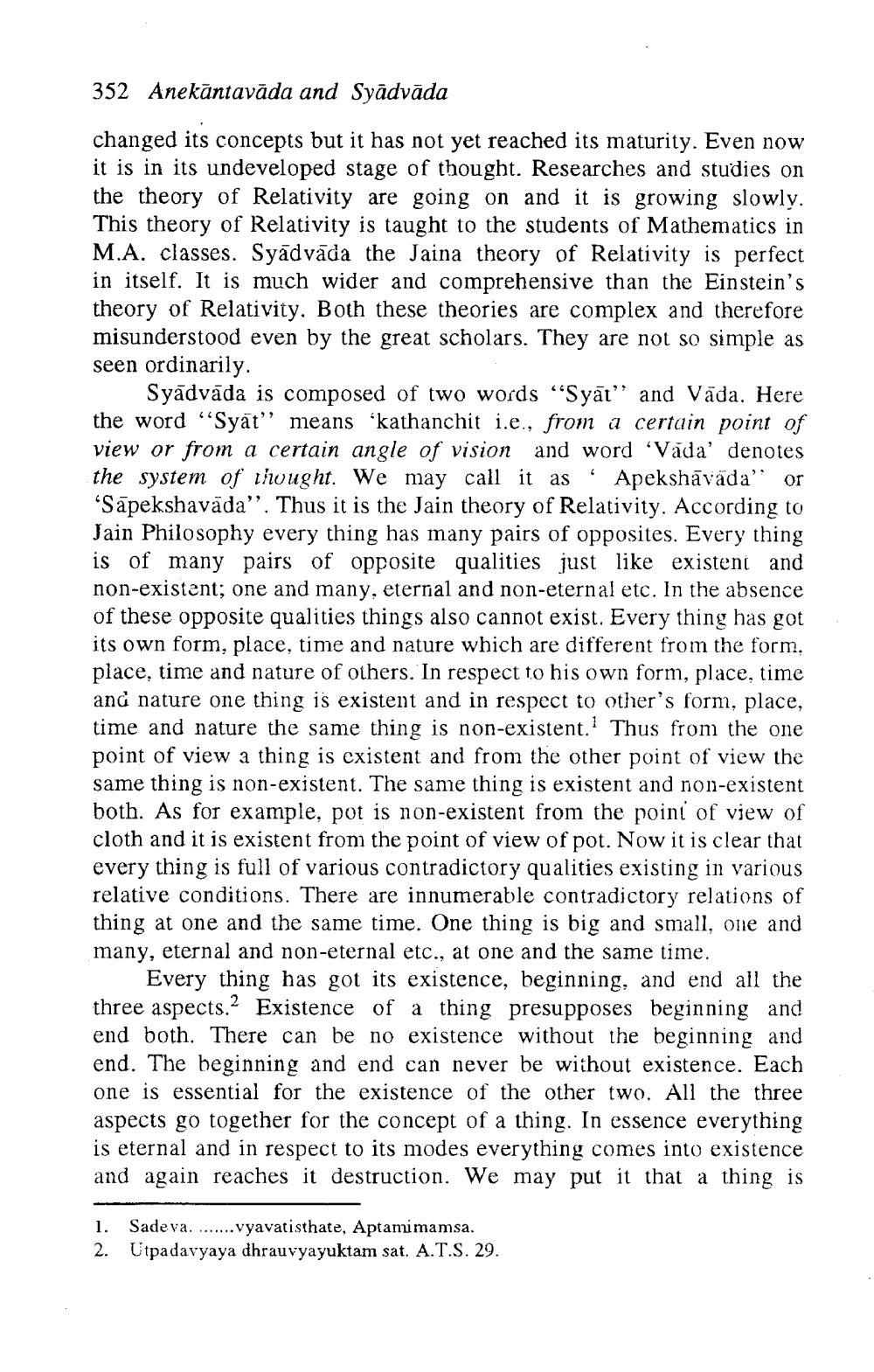________________
352 Anekāntavāda and Syādvāda
changed its concepts but it has not yet reached its maturity. Even now it is in its undeveloped stage of thought. Researches and studies on the theory of Relativity are going on and it is growing slowly. This theory of Relativity is taught to the students of Mathematics in M.A. classes. Syadvāda the Jaina theory of Relativity is perfect in itself. It is much wider and comprehensive than the Einstein's theory of Relativity. Both these theories are complex and therefore misunderstood even by the great scholars. They are not so simple as seen ordinarily.
Syādvāda is composed of two words “Syāt" and Vāda. Here the word "Syät'' means ‘kathanchit i.e., from a certain point of view or from a certain angle of vision and word 'Vada' denotes the system of thought. We may call it as · Apekshāvada' or
Sāpekshavada". Thus it is the Jain theory of Relativity. According to Jain Philosophy every thing has many pairs of opposites. Every thing is of many pairs of opposite qualities just like existeni and non-existent; one and many, eternal and non-eternal etc. In the absence of these opposite qualities things also cannot exist. Every thing has got its own form, place, time and nature which are different from the form, place, time and nature of others. In respect to his own form, place, time and nature one thing is existent and in respect to other's form, place, time and nature the same thing is non-existent. Thus from the one point of view a thing is existent and from the other point of view the same thing is non-existent. The same thing is existent and non-existent both. As for example, pot is non-existent from the poini of view of cloth and it is existent from the point of view of pot. Now it is clear that every thing is full of various contradictory qualities existing in various relative conditions. There are innumerable contradictory relations of thing at one and the same time. One thing is big and small, one and many, eternal and non-eternal etc., at one and the same time.
Every thing has got its existence, beginning, and end all the three aspects.? Existence of a thing presupposes beginning and end both. There can be no existence without the beginning and end. The beginning and end can never be without existence. Each one is essential for the existence of the other two. All the three aspects go together for the concept of a thing. In essence everything is eternal and in respect to its modes everything comes into existence and again reaches it destruction. We may put it that a thing is
1. Sadeva........vyavatisthate, Aptamimamsa. 2. Utpadavyaya dhrauvyayuktam sat. A.T.S. 29.




